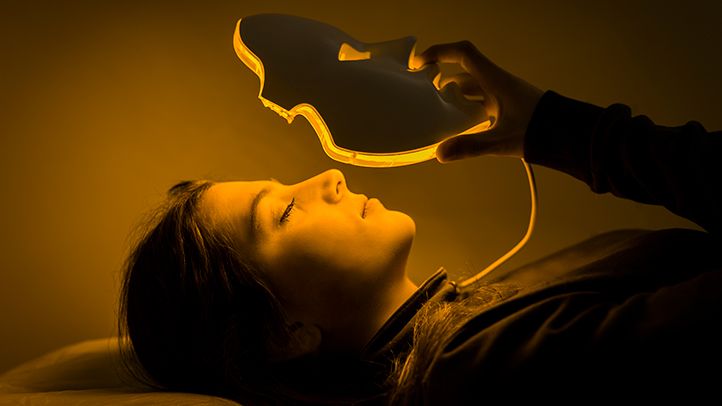Light’s Effects on Human Body – Blue, Green, Yellow, Orange and Red Light Therapy
You may not realise it, but light therapy has the potential to play a significant role in your overall health and wellness. Studies indicate that specific color wavelengths carry numerous biological effects on humans. This article aims to delve into various light therapies and their potential influence on human wellbeing. We will delve into the concept of blue, green, yellow, orange and red light therapies and how they could revolutionize your health routine.
The Science Behind Light Therapy
The science of light therapy revolves around the concept that our cells absorb light and transform it into cellular energy. This process aids in repairing damaged tissues, reducing inflammation, and promoting overall body regeneration. Subsequently, different wavelengths or colors of light carry unique therapeutic benefits.
A Deeper Understanding of Blue Light Therapy
Often associated with sleep disorders and mood swings, blue light can, in controlled doses, yield significant health benefits. Blue light therapy is instrumental in treating conditions like seasonal affective disorder (SAD) and enhancing alertness during the day.
Benefits of Blue Light Therapy
Blue light filters have proven quite beneficial for reducing depressive symptoms related to SAD. By imitating daylight, blue light tricks your body into thinking it is daytime hence improving your mood. To learn more about the several benefits of this treatment, click here.
You Might Need Less Blue Light Exposure At Night
While beneficial during the day, exposure to too much blue light at night can disrupt natural sleep patterns. The logic behind this is that our bodies associate blue light with daytime so it suppresses melatonin production, a hormone essential for sleep.
Let’s Talk About Green Light Therapy
Green light therapy is another promising field in the realm of light-based treatments. Studies have demonstrated its effectiveness in managing migraines and other forms of chronic pain by triggering soothing, healing processes within the body.
Increased Awareness Around Green Light Therapy
Awareness around green light therapy is increasing due to its potential benefits in managing pain. Harnessing this color of light might provide a non-invasive, drug-free solution for chronic pain sufferers.
What Is Yellow Light Therapy?
Yellow light therapy can be particularly advantageous for your skin. It helps rejuvenate the skin cells, making your skin glow naturally and boosting its natural defences against harmful ultraviolet (UV) rays.
Positive Impact on Skin Conditions
Research into yellow light therapy suggests a positive impact on various skin conditions such as rosacea, wrinkles, sun damage and more. This light stimulates the production of collagen and elastin, which are proteins that contribute to a youthful appearance.
What about Orange Light Therapy?
Orange light therapy, with its mood-enhancing properties, can help alleviate insomnia and seasonal affective disorder (SAD). The uplifting color wavelength tends to promote mood stability and improved cognitive function.
Importance for Mental Wellbeing
Perhaps the most essential feature of orange light therapy is its impact on mental wellbeing. Mimicking sunrise and sunset, orange wavelengths of light stimulate a sense of calm and improve concentration levels.
Orange Light Reduces Sleep Disorders
Orange light can also find applications in treating sleep disorders by promoting the production of sleep-promoting hormones providing a natural remedy for insomnia.
A Closer Look at Red Light Therapy
Red light therapy tends to be the most popular form because of its diverse range of benefits. It aids in reducing skin inflammation, treating scars, promoting hair growth and easing pain.
Helpful for Skincare
Red light therapy has proven beneficial in skincare, by rejuvenating skin cells and promoting collagen production, helpful in achieving youthful looking skin.
Deep Healing with Red Light
This form of therapy enables deep healing, reaching muscles and joints to alleviate discomfort. Athletes often use red light therapy to quicken recovery from injuries and improve physical performance.
Light Therapy Safety Concerns
Although light therapies are generally safe, overexposure can lead to eye damage or insomnia. It is essential to use these therapies under supervision for safe, positive outcomes.
The Future of Light Therapies
Experts are continually researching light therapy and its myriad of potential health benefits. As we gain more insights into these treatments, their applications are only likely to grow wider and more accepted in mainstream healthcare practices.
Picking The Right Light Therapy For You
Choosing the right light therapy depends on your specific health conditions and goals. It might be beneficial to consult with a health professional who will guide you through choosing the most appropriate light therapy for your needs.
In a Nutshell
Bifferent light frequencies have varying impacts on human health. Blue, green, yellow, orange and red wavelengths carry potential therapeutic benefits from enhancing mood, alleviating chronic pain, rejuvenating the skin to reducing inflammation. As research continues to evolve, one can only expect these therapies potential to further unleash.

